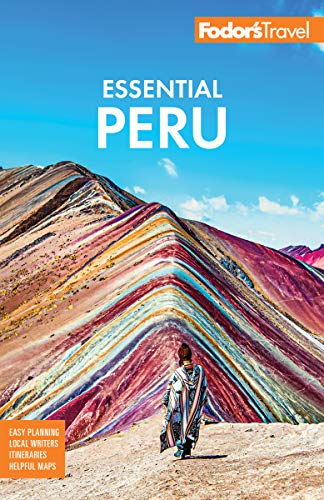Quechua of the Andes
The Quechua are some of the original inhabitants of the Andes. Their traditions and beliefs have survived Inca domination, Spanish conquests, and the gradual incursion of modern technology. Throughout the Central Highlands, many locals speak Quechua as their first language and wear traditional costumes woven on backstrap looms. A good number make their living by farming maize and coca in the valleys or potatoes and quinoa in the higher altitudes, while other families herd llamas and alpacas on the cold, windy puna.
Quechua Attire
Walk through the narrow, cobbled streets of any village, and you'll spot Quechua men by the large patterned and fringed ponchos draped over their shoulders; many sport matching tasseled cloths beneath broad-brimmed felt hats with conelike peaks. Knee-length pants are held up with a wide, woven belt that often has local motifs, such as condors or coca leaves. Despite the cold, men usually wear rubber sandals, often fashioned from old tires.
Quechua women's attire is equally bright, with knit sweaters and a flouncing, patterned skirt over several petticoats (added for both warmth and puff). Instead of a poncho, women wear an aguayo, a length of sarong-like fabric that can be tied into a sling for carrying a baby or market goods or wrapped around their shoulders for warmth. Hats for the women differ from village to village; some wear black-felt caps with a neon fringe and elaborate patterns of sequins and beads, whereas others wear a plain, brown-felt derby. Women also wear rubber sandals for walking and working in the fields but often go barefoot at home.
Quechua Homes
As you travel through the Andes, look for gatherings of stone or adobe-brick homes with thatched roofs. These wasis, or typical Quechua houses, are basic inside and out. Food is cooked either in an adobe oven next to the dwelling or over an open fire inside. Mud platforms with llama wool or sheepskin blankets make do for beds; occasionally a family will have the luxury of a wooden bed frame and grass mattress. All members of the family work in the fields as soon as they are able. Members of the ayllu (extended family) are expected to contribute to major projects like harvesting the fields or building a new home.
The Morochuco Quechua
The Morochuco are a unique group of formerly nomadic Quechua who live near Ayacucho on the Pampas de Cangallo. They have light skin and blue eyes, and, unlike other Quechua, many Morochuco men wear beards. The Morochuco are first-rate horseback riders—women and children included—who take advantage of their swiftness and agility to round up bulls on the highland pampas. Renowned for their fearlessness and strength, the Morochuco fought for Peru's independence on horseback with Simón de Bolívar. Women ride in long skirts and petticoats, whereas men don thick wool tights and dark ponchos. Both men and women wear chullos, wool hats with earflaps, beneath a felt hat tied under the chin with a red sash.




